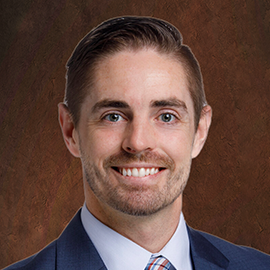Tennis Elbow
What Is Tennis Elbow?
Tennis elbow, also known as lateral epicondylitis, is a sports-related condition that affects the elbow, wrist, and lower arm. The tendons in the elbow can become overloaded, often because of repetitive motion, resulting in pain and swelling.
The tendons in the elbow connect muscles to the bones. Certain arm movements may cause small tears in tendons located near the extensor carpi radialis brevis (ECRB) muscle, resulting in tennis elbow.
Those who suffer from tennis elbow typically experience pain in and around the bony bump located on the outside of the elbow. In some severe cases, this pain can spread down to the wrist and impact the entire lower arm.
Whom Does Tennis Elbow Affect?
There are several tennis elbow causes to be aware of. Contrary to popular belief, tennis elbow does not only impact tennis players. In fact, it could impact anyone who uses their arm muscles in repetitive motions, such as butchers, carpenters, and plumbers. Tennis elbow is caused by overuse and muscle strain.
Tennis elbow risk factors may include age and occupation. While the condition can impact patients of any age, it is most often seen in patients aged 30 to 50. As far as occupation, those serving as painters, plumbers, and butchers (among other occupations) are at increased risk of tennis elbow due to the repetitive nature of their jobs. Of course, athletes, particularly tennis players, are also at a higher risk.
Playing certain instruments, working on an assembly line, cutting with a knife in the kitchen, and working on cars can also result in tennis elbow.
What are the Symptoms of Tennis Elbow?
Tennis elbow is most often associated with pain in the elbow and below. This pain can also result in weakness, making it hard to grip objects or shake hands. Pain most often occurs when performing repetitive motions with the arm, but pain may also remain consistent even when the arm is not in use.
Besides pain, the most common tennis elbow symptoms include inflammation in the elbow, tenderness on the outside of the elbow, and pain at night. Often, symptoms are more intense during activities that involve the forearm, like turning a wrench. The dominant arm often bears the brunt of the condition, but both arms can potentially be impacted.
How is Tennis Elbow Treated?
Tennis elbow treatment is typically quick, as the condition can resolve itself without much outside help. The first line of defense is to take a break from sports and certain movements that may make the pain worse. Allowing the arm to rest provides the best chance of full and quick recovery.
Often, patients find that they can relieve pain and recover their range of motion by taking over-the-counter pain relievers, resting the elbow and arm when possible, and reducing activities that involve repetitive motion of the elbow. For those who can’t fully stop the activities causing their elbow pain, the use of a brace may be helpful.
If at-home treatment methods don’t deliver pain relief and symptoms last for more than a week, it’s recommended to see a doctor. Your doctor may run tests like MRIs or electromyographs to confirm the diagnosis of tennis elbow.
In more severe cases, physicians may recommend steroid injections to reduce pain. Platelet-rich plasma (PRP) is another option that has seen some promising results in early studies. Finally, some patients see success with ultrasound treatment, as it can help to increase blood flow, break up scar tissue, and promote healing.
There are also ways to prevent tennis elbow from returning again. Strength training exercises targeted at your arms and wrists can better equip your elbow to deal with repetitive motions. If you play a racket sport such as tennis, ensure you’re using the right equipment and are well-versed in proper stroke techniques.
Tennis Elbow Surgical Treatment Options
Surgery is often recommended in cases of tennis elbow that do not revolve after 6 to 12 months of standard treatment options. The majority of tennis elbow surgeries involve taking the diseased muscle out of the elbow and attaching healthy muscle back to the bone.
Open surgery is the most common surgical procedure for tennis elbow. This outpatient procedure involves making an incision over the elbow to fix the muscle. Since this surgery is so quick and simple, it does not typically require an overnight hospital stay.
Similarly, arthroscopic surgery may be an option. In this procedure, an orthopedic surgeon will use miniature instruments to make small incisions in the elbow, enabling them to repair the elbow. Just like open surgery, this is an outpatient procedure that rarely requires patients to spend the night in the hospital.
Following surgery, physical therapy may be recommended. It is common for the impacted arm to be placed in a splint for at least a week following surgery. Once the splint is removed, you can begin a physical therapy program to restore flexibility and range of motion. Typically, patients can return to their normal activities 4 to 6 months after surgery.
To learn more about Tennis Elbow treatment options in the Fort Myers, Estero and Naples area, contact Orthopedic Center of Florida.
Resources
- Hand Arthritis
- Thumb Arthritis
- Wrist Arthritis
- Elbow Osteoarthritis
- Carpal Tunnel and Frequently Asked Questions
- Trigger Finger and Frequently Asked Questions
- Tennis Elbow
- Basal Joint Osteoarthritis
- Colles Fracture
- De Quervain’s Tenosynovitis
- Distal Radius Fracture (Broken Wrist)
- Dupuytren’s Disease
- Flexor Tendon Injuries
- Fractures of the Finger
- Fractures of the Hand (Metacarpal Fractures)
- Lateral Epicondylitis (Tennis Elbow)
- Medial Epicondylitis (Golfer’s Elbow)
- Nerve Injuries of the Hand
- Osteoarthritis of the Hand
- Rheumatoid Arthritis of the Hand
- Triangular Fibrocartilage Complex Tears

Meet our Hand, Wrist & Elbow Doctors:
Sandra B. Collins, MD
Board Certified, Fellowship Trained Orthopedic SurgeonHand and Upper Extremity Specialties[button...
Alicia F. Cowan, MD
Fellowship Trained SpecialistHand and Upper Extremity SpecialtiesCrush Injuries to Hand...
Spencer P. Skinner, MD
Board-Certified, Fellowship-Trained Orthopedic Surgeon Specializing in Hand, Upper Extremity, and Peripheral Nerve SurgeryOrthopedic Services and Sports Medicine SpecialtiesShoulderDislocations &...



